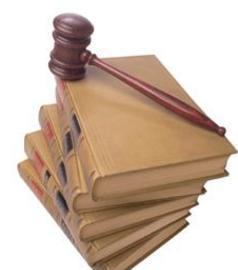Thanks to two changes in EU law, you now have a range of copyright protections to suit various needs
Recently Airbus asked BMW to help make the interior of its new Airbus A350 just that little bit more comfortable. The collaboration is unusual, both in the synergy that two well-known companies have found between two very different markets, and in the fact that this venture will probably put the poorest relation in the family of intellectual property rights at the centre of debate.
Design rights are, in terms of the attention they receive, overshadowed by copyright, trademarks and patents. But in the world of construction, they are a useful addition to your armoury, and never more so than now after two key changes to the law.
To register or not to register?
There have for many years been two ways to protect your design. You could make a formal application to the UK's Patent Office to register it in a process similar to trademark or patent registration. With fees paid you would own a monopoly: no one else would be able to use it without your permission.
Alternatively, there were unregistered rights. These do not rely on a registration process and this means they are free. They arise automatically when the design is first made in the same way as copyright. The trade-off for avoiding the expense of registration is that the level of protection is lower: you can certainly prevent a straight rip-off but don't have a monopoly. If the other party came up with the same idea independently, they could use it.
Any product can be protected by these rights. Examples are a new type of seat designed by BMW for the Airbus A350; the shape of a tap; the design of a door; the appearance of a component for a conservatory; a type of beam; a piece of tooling. (There are of course tests to check they qualify).
European protection
The EU has now introduced the "Community Design". Previously, the owner of a design would have to register it in each country where they felt protection was desirable. This meant dealing with a number of application processes (in a number of languages) and paying multiple registry fees.
This expense and administrative burden have been reduced by the registered version of the Community Design. With only one application (to an office in Alicante, Spain) and one set of fees, you can acquire a registered design (and therefore a monopoly) valid across all member states and lasting up to 25 years (if you renew it).
To avoid the application process, you can try the unregistered Community Design Right. Like a national design right, this arises automatically, but is valid for three years across the EU.
Previously the owner of a design would have to register it in each country they felt protection was needed, paying multiple registry fees
Trademarks
When the EU amended the design rules, it changed the definition of a "product". The new definition adds the following elements: packaging, graphic symbols and typographic type-faces. For our purposes, the key item is "graphic symbols", which includes logos.
The usual way to protect a logo as part of your company's image and name is to register it as a trademark. However, this is sometimes impossible; for example where the mark is not distinctive enough. Then, even when the trademark has been granted, it will only give protection for certain goods and services. A law firm will have a right to its name - but a candlestick maker can likely use the same name with impunity.
There are no such limitations on a registered design right. If you register your logo as a Community Design you will be able to prevent anyone in the EU using it for as long as the design is protected. In other words, you can get much broader (though shorter-term) protection for your trademark by registering it as a design than you would by registering it as a trademark.
Points to watch
• Ask your lawyers to make sure that if you want to exploit a design you're creating, you own it.
• If you are applying for a trademark: should you make a parallel application for a design?
• If you have trouble getting a trademark, perhaps a registered design could fill the gap for a while?
Source
Building Sustainable Design
Postscript
Neil Wallis is a solicitor with City law firm Macfarlanes; his direct line is 020 7849 2323





















No comments yet